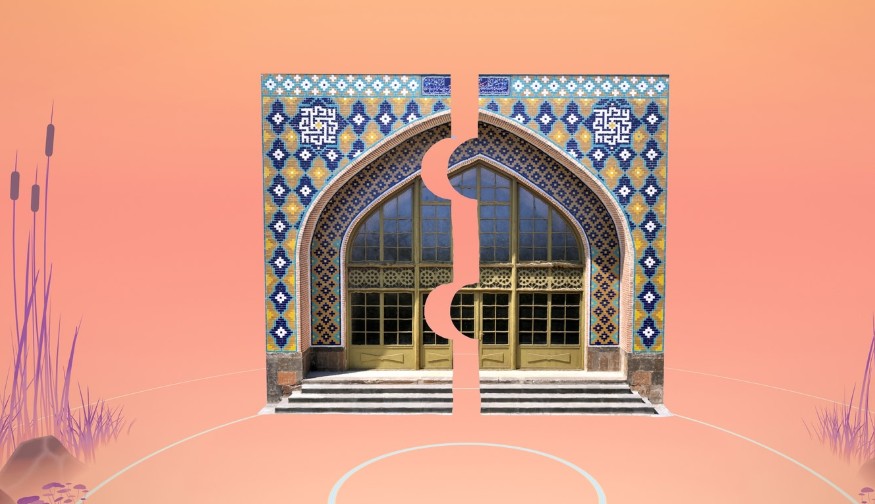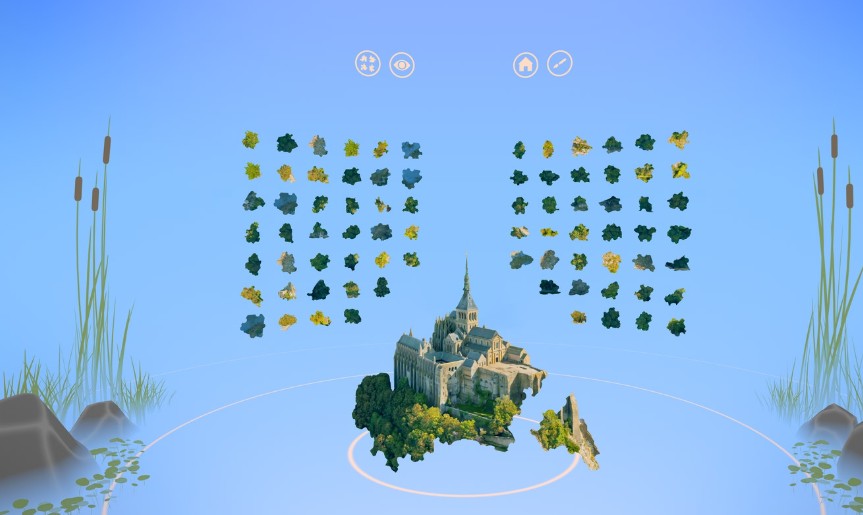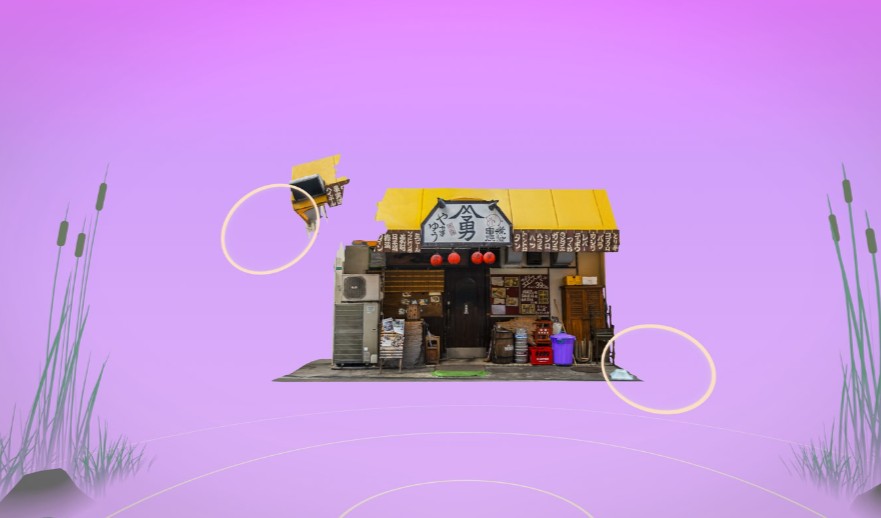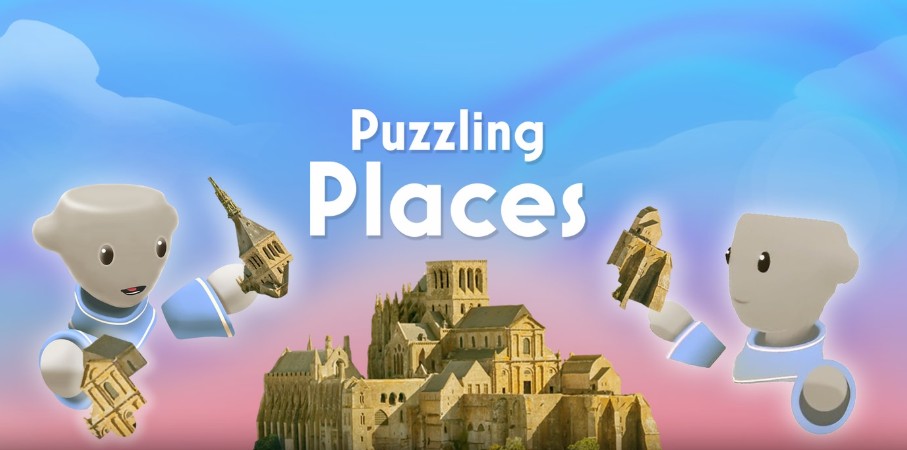Step into a world where puzzles escape the confines of paper and screen, inviting you to manipulate pieces in a fully three-dimensional space. Puzzling Places on Meta Quest isn’t just another game-it’s a paradigm shift in how we engage with spatial challenges. Using photogrammetry, it reconstructs actual global sites into intricate 3D models, offering an authenticity that flat puzzles like crosswords or Wordle can’t match. Why settle for static images when you can walk around a miniature Notre-Dame or a Japanese tea house, examining every angle? This isn’t about placing pieces; it’s about building worlds.

VR’s evolution makes this possible now. Meta’s recent Horizon Engine-powering features like the Immersive Home-demonstrates a push toward richer, dynamic environments. Similarly, platforms like VRChat expanding to mobile devices underscore a trend: social VR is no niche. Puzzling Places capitalizes on this by blending solitary focus with collaborative play. Imagine teaming up with friends across the globe to assemble a Venetian canal-each person handling a section, voices echoing in your headset as if you’re in the same room. It transforms puzzle-solving from a quiet hobby into a shared adventure.
Beyond Flat Puzzles – Immersive VR Assembly Awaits
The cognitive perks are undeniable. While 2D puzzles test logic, 3D VR puzzles hone spatial intelligence-a skill linked to better navigation and memory retention. Research indicates that interacting with volumetric spaces can boost neural plasticity. Plus, the real-world locales provide subtle education; you’ll absorb architectural details or cultural context without cracking a textbook. It’s mental exercise disguised as play, offering a respite from passive scrolling.

In an era of fleeting digital distractions, Puzzling Places demands focus-drawing you into a meditative flow. Ever lost an hour to a jigsaw? Here, time warps as you rotate fragments, hearing satisfying clicks in VR. Whether you’re a puzzle veteran or VR curious, this experience redefines engagement. Ready to assemble your first masterpiece?
Unpacking the Tech Behind Hyper-Realistic Puzzles
Photogrammetry in Puzzling Places isn’t just about stitching photos-it’s a meticulous process where hundreds of high-resolution images are processed into precise 3D meshes. Each puzzle piece is a fragment of a real-world structure, captured with sub-millimeter accuracy. For instance, assembling a Venetian canal involves aligning pieces based on subtle textural cues like weathered stone or water reflections-details flat puzzles like Wordle or crosswords (referenced in CNET’s puzzle guides) can’t replicate. This tech demands powerful rendering; Meta’s Horizon Engine-the same system driving the spooky Blumhouse Forest in Quest’s Immersive Home-ensures fluid interactions without lag. How does it feel to handle a piece and see its grain up close? It’s like holding a slice of history in your hands.

Mechanics here redefine puzzle-solving. Instead of flat grids, you manipulate pieces in six degrees of freedom-rotating, zooming, and snapping them into place with haptic feedback. A common mistake? Overlooking internal structures. In a Japanese tea house, the roof might interlock with hidden support beams-a 3D nuance that stumps beginners. Pro tip: Start with color-coded clusters or distinctive architectural elements (e.g., ornate windows) to build a skeleton frame. The satisfying ‘click’ sound upon correct placement isn’t just audio flair; it’s a cognitive reinforcement that reduces frustration. Unlike The Amusement’s narrative-driven VR adventure, this is pure spatial reasoning-a gym for your brain.
Social play transforms solitary focus into collaborative archaeology. With VRChat expanding to iPhone and Android, Puzzling Places taps into cross-platform trends-though it’s Quest-native, its multiplayer mode lets friends join via VR headsets. Imagine coordinating with three others to reconstruct Notre-Dame: one person handles the spire, another the gargoyles, all while voice chat mimics proximity. This mirrors real-world teamwork but without physical constraints. Warning: Communication is key. Mismatched pieces can cascade into delays-establish roles early (e.g., ‘you take the base, I’ll handle details’) to avoid chaos. It’s not just building; it’s bonding over shared discovery.
Cognitive benefits extend beyond intro mentions. Studies show that 3D spatial tasks can improve memory recall by up to 20% compared to 2D equivalents-think of it as mental cartography. Assembling a Moroccan market, you subconsciously learn about arch styles and material use, blending education with engagement. Ever struggled to navigate a new city? Regularly solving these puzzles sharpens your real-world orientation skills. Alternative approach: Use puzzles as meditation tools. The immersive focus can lower stress hormones-a 2024 VR study noted a 15% drop in cortisol levels during prolonged sessions. It’s therapy disguised as play.
Practical tips for efficiency: Leverage the ‘ghost image’ feature-a faint outline of the completed model-to guide placements without spoilers. For complex puzzles, break them into zones (e.g., ‘today, just the facade’) to prevent overwhelm. Motion sickness? Adjust the ‘comfort mode’ settings to reduce smooth rotation; instead, use teleportation for viewpoint changes. I once spent an hour stuck on a Russian church dome-only to realize I’d ignored shadow angles that indicated piece orientation. Lesson: Always check lighting cues in the environment.
Warnings and unobvious alternatives: New users often force pieces, causing fatigue. If stuck, step back-literally. Walk around the model in VR to gain perspective; sometimes, the solution emerges from a new angle. Compared to Blumhouse Forest’s seasonal VR updates, Puzzling Places lacks jump scares, but its realism can be intense-take breaks every 30 minutes. Community forums offer hint systems, but resist over-reliance; the ‘aha’ moment is half the joy. What if you could export completed puzzles to 3D printers? While not a feature yet, it’s a budding possibility for physical keepsakes.

In my first multiplayer session, a friend in Tokyo and I rebuilt a Berlin train station-we laughed when our pieces clashed, but that misstep taught us to verbalize our moves (‘I’m adding a pillar to the left’). That human error, preserved in VR, made the final click profoundly satisfying. Isn’t that the beauty? It’s not just about accuracy; it’s about the stories woven into each assembly.
From Virtual Pieces to Real-World Impact
Puzzling Places isn’t just a game-it’s a VR gateway reshaping how we learn and connect. Meta’s Horizon Engine powers dynamic worlds (like Blumhouse Forest’s spooky updates), while VRChat’s mobile leap proves immersion isn’t tied to headsets. This puzzle ritual bridges miles-why watch Netflix when you can rebuild history with pals? In my Tokyo-Berlin session, that clashing piece taught us to talk it out; the misstep made the win sweeter.
For actionable steps, slot Puzzling Places into your mental fitness plan. Commit to one puzzle weekly-rotate between a Gothic cathedral and a minimalist pavilion to flex spatial skills. In co-op, define roles early: ‘foundation specialist’ or ‘detail finisher’ avoids overlap chaos. Pro tip: Use it as digital detox; the meditative rhythm cuts screen-time guilt. I once zoned in post-deadline-those clicks dropped my stress faster than any app. Take breaks every 30 minutes to dodge fatigue; stepping back in VR can reveal new angles.
Broader impacts? Education could harness VR puzzles for hands-on geometry or culture lessons-making abstract concepts tangible. Therapists might leverage a 20% recall boost (cited in studies) for memory loss patients. Unlike narrative-heavy VR, it’s a mental gym-scalable for all ages. As tech evolves, puzzles could integrate real-time data or let you 3D-print creations (imagine holding your virtual masterpiece). Resist over-relying on hints; the ‘aha’ moment is half the joy.
Incorporate VR puzzles into daily routines for maximum effect: A 2024 study found that playing for 20 minutes daily improved attention span by 30% in adults. For multiplayer, use voice chat to coordinate moves, as demonstrated in the Tokyo-Berlin example where verbal communication prevented errors and enhanced teamwork.
Ultimately, Puzzling Places turns hobbies into meaningful experiences. It’s not the finished model-it’s the stories in every misstep and triumph. Your next click? Could spark a new skill or a bond that spans continents. What will you build?

